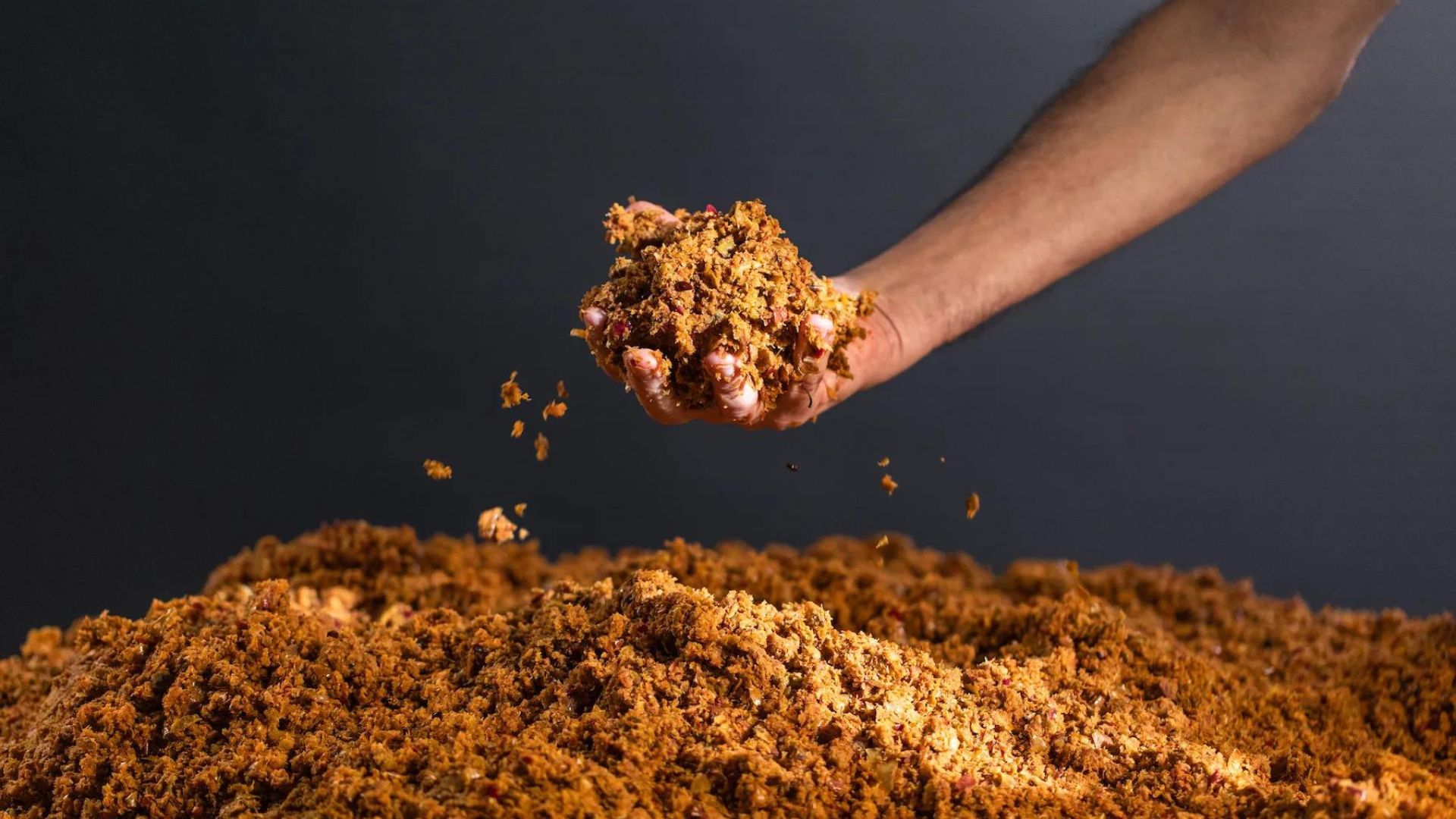Leap, a more than 85% bio-based material made with upcycled apple waste
After years of intensive research & developments, Beyond Leather Materials has been able to optimize and scale-up the manufacturing process which transforms leftover apples from apple juice and cider producers into a valuable material suitable for several applications in design.

Founded in 2017 by Hannah Michaud and Mikael Eydt, Copenhagen-based Beyond Leather Materials has always been dedicated to pushing the boundaries of material science forward to become one of the leading suppliers of next-gen materials. Main goal of the company was to find and optimize a reliable method to transform discarded apple waste from local, small companies into a valuable resource, by leveraging the latest available technologies and focusing on the very key principles of a circular economy.
Leap by Beyond Leather Materials:
Development and upscaling
The result is an interesting material entering the booming market of leather alternatives, that can also look and feel completely new. Its development is not only generating new value, it is also helping apple juice and cider producers reduce their waste management costs, while preventing apples from ending up in landfills: each square meter of Leap is, indeed, estimated to save approximately 1.8kg of apple pulp from landfill.

Nowadays, Leap can be produced on 1.5 meter-wide rolls, with the plant capability to produce over 100.000 sqm on a yearly basis. This milestone marks a significant step as it highlights the manufacturer’s transition from a research-focused start-up to an established supplier.
Features
The material is essentially made of three layers, a Tencel™ based textile backing, an apple waste blend, and a finishing coating. The apple waste blend contains natural rubber plus other confidential bio-based ingredients. The outer coating is a water-based, partially bio-based PU coating, while the uppermost protective layer is made of fossil-fuel derived ingredients. Altogether, this composition results in a durable material (see more innovative materials here) with a premium feeling currently made of more than 85% biobased content.
Applications
As of now, Leap® can be considered as best suited for small leather goods, furniture and interior design, home decor and soon for the automotive industry. As for colors, the material is available in five standard colors and four different textures. It is dyed through pigments within the topcoat, i.e: neither tanning processes nor toxic chemicals are involved in the coloring process. Color customization will soon be available in nearly endless color and texture variations, according to specific MOQ requirements.

Pros & Cons
This inspiring and valuable material consists in a solution with more than 85% bio-based content and is completely animal-free. As per available certifications, the company is aiming for obtaining the first two certifications proving the validity of the bio-based content and its 100% animal free origin. Moreover, preliminary LCA analysis on existing and upcoming operational set-ups have been carried out and are currently under the process of third-party verification.

This leather alternative, born from the upcycling of apple waste, not only offers a viable solution to the problem of food industry byproducts but also presents a promising inspiration for more environmentally conscious manufacturing. As we move towards a more circular economy, materials like Leap are leading the charge, demonstrating that more environmentally conscious design and quality can go hand in hand.
The commitment of Beyond Leather Materials to evolve even this product towards 100% bio-based ingredients is a testament to the potential of these new alternatives to transform industries along different points of the value chain, in a path towards a more sustainable future.









